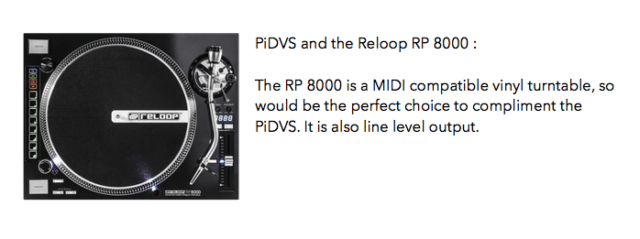We love spotlighting ingenuitive projects on DJTT – and one of the areas that with considerable activity in the last year has been standalone gear. Today we’re taking a closer look at PiDVS, a full-featured concept that brings complete digital DJ features. We’ve seen similar hacker projects tackle this concept before – but this is the most commercial ready. Keep reading to learn more.
What Is PiDVS?
The core idea behind PiDVS is bringing the CDJ-style experience to DVS users, without adding a laptop into the mix. Instead, this project uses Raspberry Pi – a tiny computer – for each deck.
The man behind the project is Sam Spreadborough, a student (soon to be graduate) of UWE Bristol – who has put together PiDVS as his final year project. Sam writes:
The project idea came from seeing how easy the Pioneer CDJ 2000 (and similar) range of CDJs are; you just bring a USB music, and then seeing how complicated a standard DVS setup is.
This project would be perfect for any DJ who enjoys playing using vinyl and would like to simplify their setup, or, for the DJ who’s interested in learning to use vinyl but is intimated by other DVS solutions.
The PiDVS is able to be adapted to work with any turntable or CD player (basically anything that can output Timecode) so long as one of the supported Timecode types are used.
Listen to him explain the concept and go through it in the video below.
The Real Win Here: The Software
We’ve featured a few other standalone DVS projects on DJTT before – including PiDeck and the wild Technics DVS mod. But the PiDVS project really shines in terms of polish on the software used on the Raspberry Pis. Take a look at the feature list for the software:
- 0.7 ms latency
- Scrolling waveform
- BPM display
- Cue points
- Loops
- Able to play music from USB drive
- File browser search
- Software phono preamp for turntables without line level output
- Players linked via ethernet can share beat counter information
- The PiDVS runs at 48KHz sampling rate, using a 32 sample block size. This gives a total latency of 0.7 ms. The scrolling waveform has a refresh rate of 60 frames per second.
Read even more about PiDVS’ features and software in the official user manual that Sam has released online.
How Can You Get PiDVS?

Prepare to be disappointed: despite this project being completely finished, Sam is (perhaps wisely) choosing not to release the software publicly. The user ends with a note, carefully placed right below his LinkedIn and contact email, “There are currently no plans to release this commercially.”
The bet here is instead that a major music manufacturer will bite on the project and want to get Sam and his project locked down and bring PiDVS to the general public.
It’s a bit of a coin toss – on one hand, this is easily one of the most complete and well-done projects of its kind we’ve seen. On the other hand, it would be pretty unsurprising to find out that Denon or Pioneer were working on a similar standalone concept in their labs. Developing a complete hardware solution and bringing it to market takes much resources, and those two companies already have heavy forays into the world of standalone DJ gear.
Would you want to see PiDVS released to the world? Share your thoughts in the comments below.





